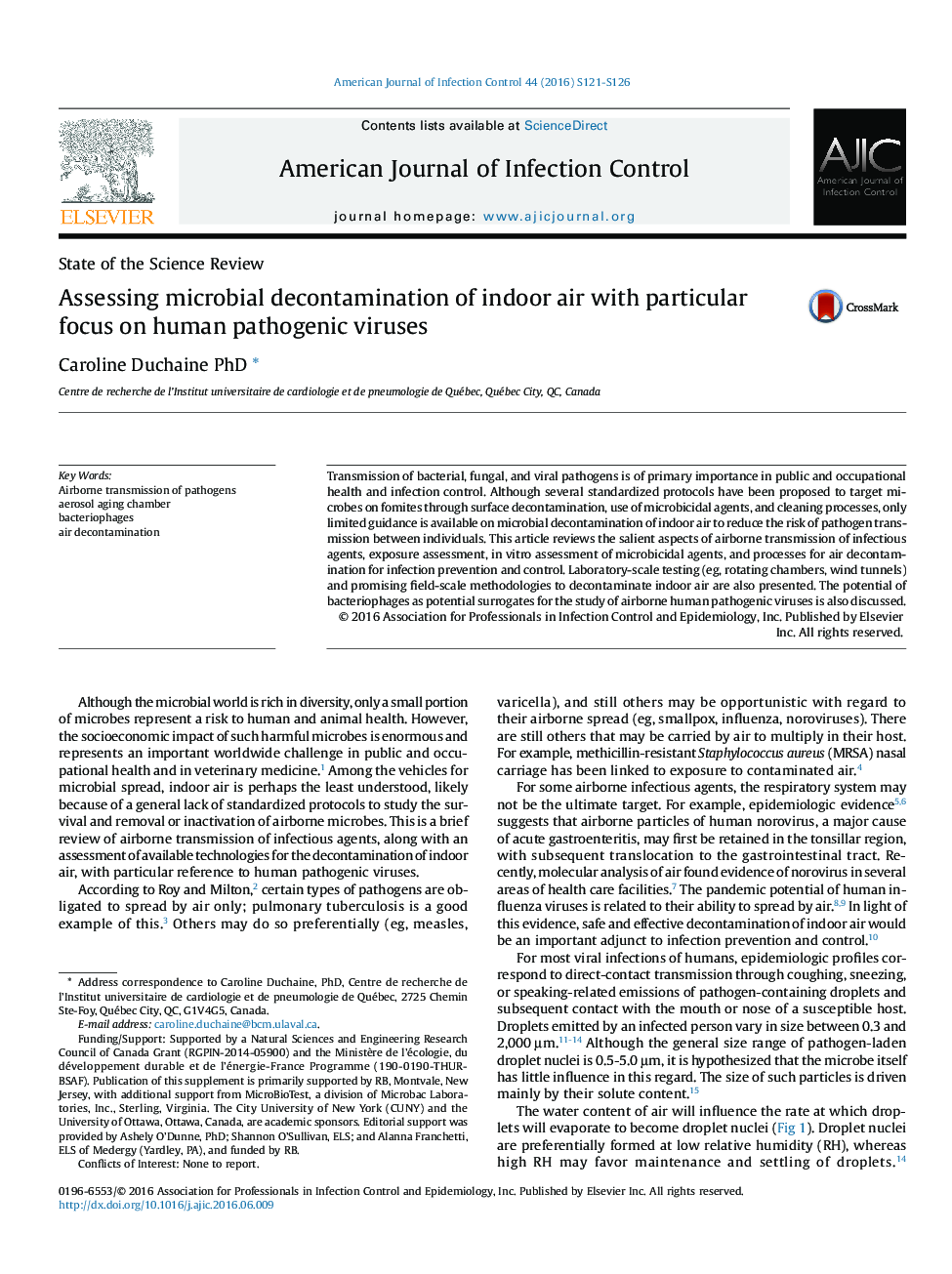| Article ID | Journal | Published Year | Pages | File Type |
|---|---|---|---|---|
| 2636665 | American Journal of Infection Control | 2016 | 6 Pages |
•The relative importance of the airborne route for several pathogens remains unclear.•Experimental facilities to study the survival and transport of airborne pathogens remain limited.•Standardized means of recovering viable pathogens from field samples of air are not available.•Phages may be used as surrogates for air decontamination study purposes and need to be further investigated.•Robust and efficient air decontamination strategies are not available and need to be developed and validated in small- and large-scale chambers.
Transmission of bacterial, fungal, and viral pathogens is of primary importance in public and occupational health and infection control. Although several standardized protocols have been proposed to target microbes on fomites through surface decontamination, use of microbicidal agents, and cleaning processes, only limited guidance is available on microbial decontamination of indoor air to reduce the risk of pathogen transmission between individuals. This article reviews the salient aspects of airborne transmission of infectious agents, exposure assessment, in vitro assessment of microbicidal agents, and processes for air decontamination for infection prevention and control. Laboratory-scale testing (eg, rotating chambers, wind tunnels) and promising field-scale methodologies to decontaminate indoor air are also presented. The potential of bacteriophages as potential surrogates for the study of airborne human pathogenic viruses is also discussed.
